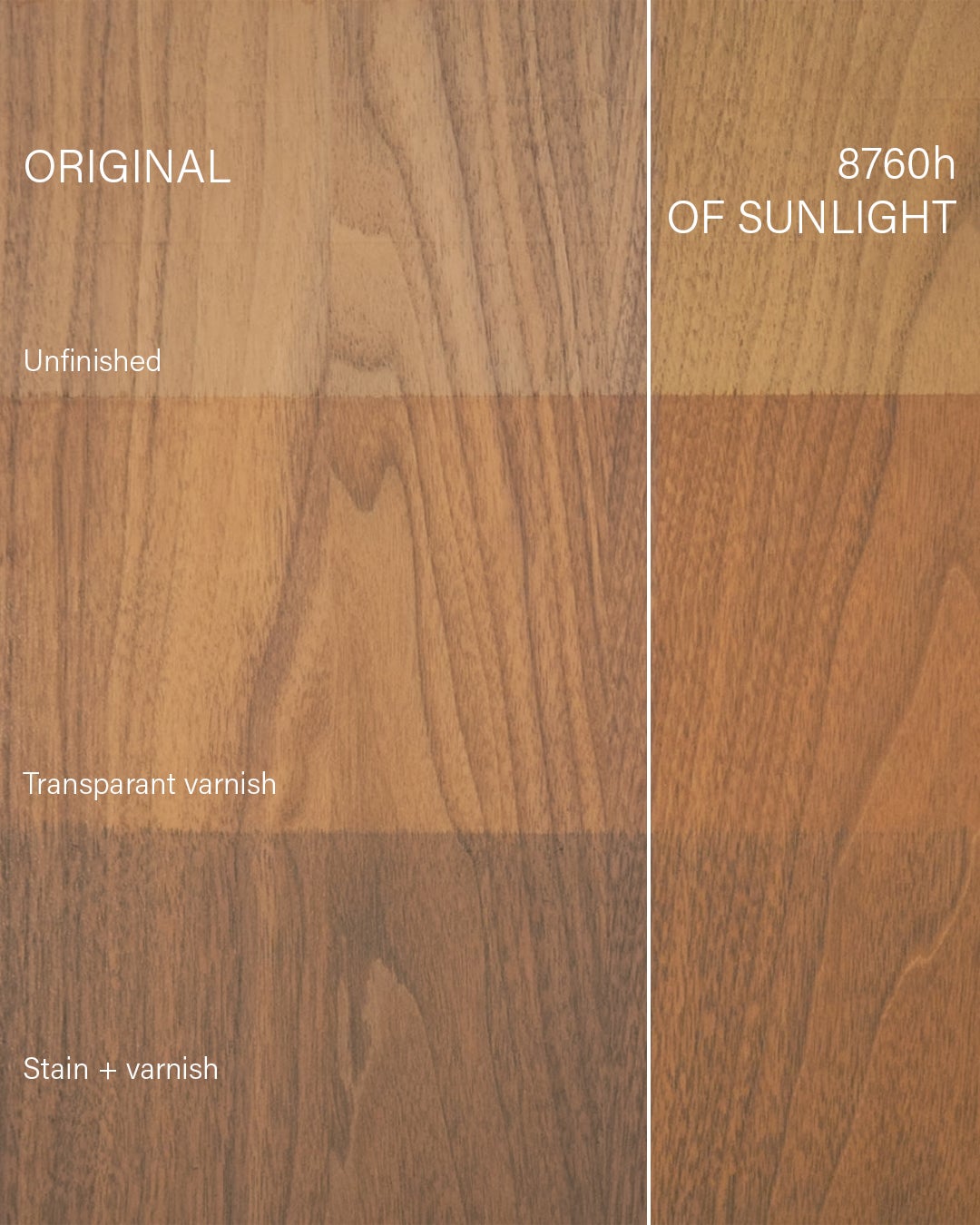01
Why finish Nuxe
02
Finishing options
03
Finishing instructions
Walnut is a natural wood specie that ranges in colour from light brown to dark chocolate brown, often with a purplish or reddish cast. Over time, as the wood ages when exposed to sunlight, the veneer will change to a more gold-orange tone if left untreated.
We therefore recommend finishing the wood with an oil or varnish combined with staining to reduce the UV impact on the colour.

Veneered panels can be finished in a variety of ways, with oils and varnishes being the most common.
- Oil finishing allows the wood to retain its natural appearance. Furthermore, as the oil will be absorbed and fill up the pores, it will prevent water and other liquids to penetrate the wood. The downside of oil finishing is that it requires more maintenance as the wood must be regularly fed with the right products.
- A varnish will seal the wood properly, resulting in a higher resistance to grease marks, making it a more reliable choice for dining tables and worktops. The downside of varnishing is that the natural appearance is more muted as you add a layer on top of the wood. However, matt varnishes can have a very subtle effect.
Furthermore, several options are possible in order to reduce the sunlight impact on the wood.
- Please ask your supplier for a finishing product including UV blockers. These products provide an additional help in protecting the wood and will lower the overall colour shift upon aging/exposure to sunlight.
- The walnut veneer can also be stained prior to varnishing or oiling in order to achieve a specific color. Especially, using a darker stain will mask the wood colour shift, thanks to the pigmentation in the stain.
- Adding white pigmentation in the treatment of your wood, will help reflect UV light and give the wood additional protection.
- In our processing instructions download you can find 3 recommended products for optimal protection against the discoloration effect of UV light.
- Inspect the veneer ahead of starting the process.
- Sand the veneer in the direction of the wood grain to avoid scratches. Remove the wood dust ahead of further steps. (*)
- Apply the varnish or oil coats according to the manufacturer’s instructions.
- Final touches: Allow the final coat to cure completely in a dust-free environment. This could take several days to a week, depending on the varnish type.
(*)Decospan offers boards that are pre-sanded to make sure the surface is clean. However, in order to achieve the optimal result, the boards need to be sanded again with a fine grit to avoid potential glue residue that might become visible when staining/finishing.
TIPS
- Temperature and humidity: Ensure you’re working in a well-ventilated area with moderate humidity and temperature, as extreme conditions can affect drying times and finish quality.
- Avoid Overworking: Don’t go back over areas that are starting to dry, as this can cause streaks or unevenness.
- Varnish Type: Oil-based varnishes typically provide a richer colour and are more durable, but take longer to dry. Water-based varnishes dry faster and are less odour-intensive, but may raise the wood grain slightly.